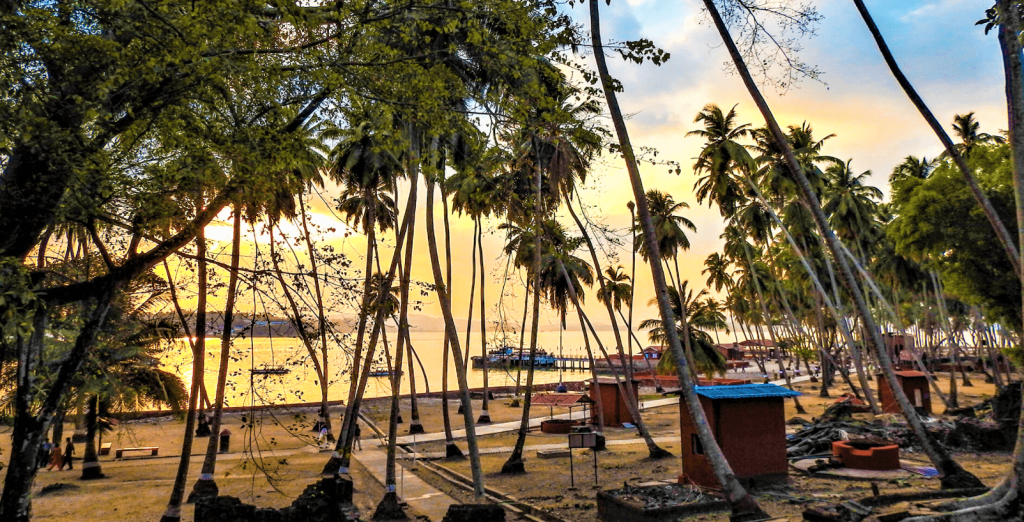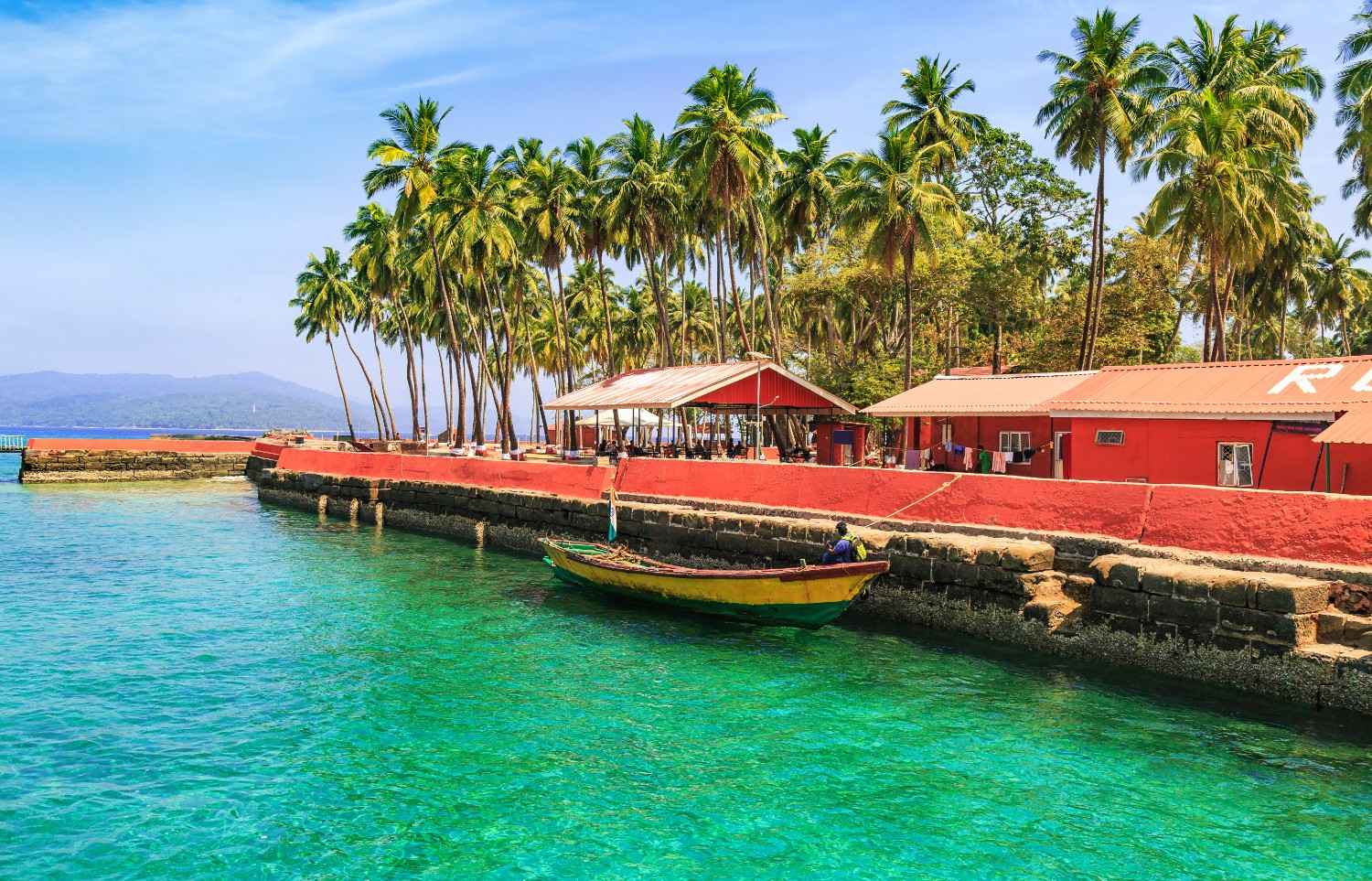A Colonial Capital With A Dark Past
Ross Island, now officially called Netaji Subhas Chandra Bose Island, was once the administrative headquarters of the British in the Andamans. Just a short ferry ride from Port Blair, this small strip of land tells a big story. In the late 19th century, the British built a thriving settlement here with bungalows, bakeries, churches, tennis courts, and even printing presses. At first glance, it looked like a tropical version of England itself. Yet beneath this façade of order and luxury was the grim reality of a penal colony, where convicts endured harsh punishments while the ruling elite enjoyed the comforts of island life.

Walking through the ruins today, you see stone buildings now wrapped in thick banyan roots, creating a dramatic picture of nature reclaiming human ambition. The silence of the ruins is broken only by the calls of peacocks and the gentle steps of spotted deer, turning the island into a surreal blend of history and wildlife sanctuary.
The Church That Stands In Silence
Among Ross Island’s most striking remnants is the Presbyterian Church, built in the 1860s with imported Burma teak and Italian stained glass. Once a grand place of worship for British officials, it now lies in ruins, roofless and overrun with vines. Yet its skeletal beauty is captivating. Sunlight filters through broken arches, roots crawl along the stone walls, and the remains whisper stories of colonial life mixed with exile and loss.
War Changes Everything
Ross Island’s colonial chapter came to an end with an earthquake in 1941 that damaged many structures, followed by the Japanese occupation of the Andamans in 1942. During World War II, the island was transformed into a military outpost with bunkers and pillboxes built for defense. Some of these wartime bunkers are still visible, their moss-covered walls offering eerie reminders of a turbulent era.
When Subhas Chandra Bose visited in 1943, he stayed at the Government House and hoisted the Indian tricolour, cementing the island’s symbolic role in India’s independence struggle. After the war, Ross Island never regained its administrative importance, and Port Blair grew to take its place.
Nature Takes Over
Decades of neglect allowed Ross Island to be reclaimed by nature. Banyan trees envelop colonial facades, peacocks wander through old gardens, and spotted deer graze near what used to be officers’ quarters. What was once called the Paris of the East for its elegance is now an open-air museum where ruins and roots coexist. This balance of nature and history is what makes Ross Island so special for travellers today.

What Visitors Can Experience
A visit to Ross Island is like stepping into a time capsule. The ferry ride from Port Blair takes barely 15 minutes, but once you arrive, you enter a world frozen in time. The main attractions include the ruined church, the remains of the Commissioner’s House, old bakeries, a small pond, and Japanese bunkers. Wildlife sightings add to the charm, with deer and birds comfortably mingling with visitors.
The Archaeological Survey of India oversees the site, and interpretive boards provide context for the ruins. A light and sound show held in the evenings brings the island’s history alive through storytelling and projections, making it a highlight of the visit.

Planning Your Trip
Ross Island is a day-trip destination as there are no overnight facilities. Basic kiosks and benches are available, but visitors should carry water, snacks, and sun protection. Comfortable walking shoes are essential, as the island is best explored on foot along its shaded paths. Morning or late afternoon visits are recommended for cooler weather and softer light for photography.
For those interested in a deeper dive into Andaman history, combine your visit with a tour of the Cellular Jail in Port Blair and nearby museums. Together, they provide a fuller picture of the islands’ colonial past and their place in India’s freedom movement.
A Living Monument
Ross Island is more than just ruins; it is a living monument to resilience, memory, and nature’s quiet power. From the grandeur of colonial ambition to the scars of war and the calm of wildlife sanctuary, it offers visitors an experience unlike any other. It is a reminder of how history changes and how nature always finds a way back.
Follow Travel Moves on Instagram and Facebook for more immersive travel stories, destination guides, and hidden gems across India and beyond.









